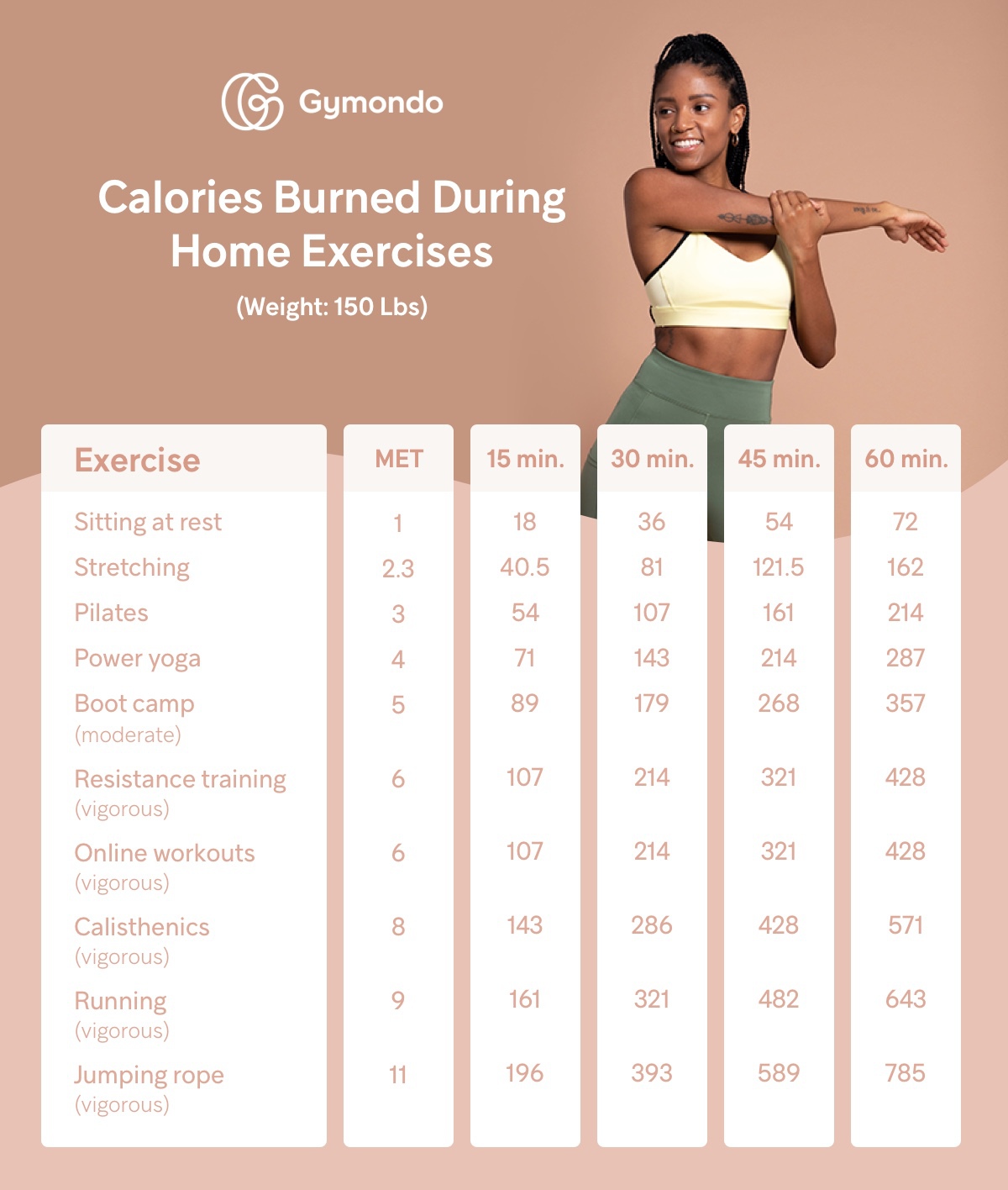Test your knowledge by taking our short quiz at the end of this article.

Ever wonder why you’re burning fewer calories than your workout buddy? After all, you just completed the same 30-minute HIIT class, yet your fitness tracker claims you burned 290 calories, while your friend burned 350. What’s the deal?
The amount of energy exerted in a fitness class varies from person to person. Are you punching as hard as your workout buddy? Do you weigh the same as her? What’s your age? How fast are you performing each exercise? These questions need to be answered for an accurate calorie count.
It’s hard to determine the exact number of calories you’re burning in a 30-minute workout class, especially since fitness trackers are off by an average of 27 percent.
Related: Fitness Trackers: Your Calorie Counting Device Is Deceiving You
In this article, we’ll examine how METs work, how to accurately calculate them and how to implement them to increase your calorie burn.
What is a MET?

Researchers from Harvard and Stanford assigned metabolic equivalents (METs) to all physical activities to determine intensity levels for individual exercises. Since 1993, METs have been the gold standard in understanding exercise intensity and caloric expenditure. But how does it work?
Metabolic rate is the rate of energy expended per unit of time. For example, one MET is the energy you spend sitting at rest—your resting metabolic rate. An activity with a MET value of 7 means you’re exerting seven times the energy needed while sitting at rest.
A vigorous run at 7.5 miles per hour has a value of 7.5 METS, while circuit training has a MET value of 8.
Calories Burned During Home Exercises (Weight: 150 Lbs)
METs are used to assess physical activity levels. The chart below lists the number of METs used and the amount of calories burned during common home exercises based on a person weighing 150 pounds (68 kilograms). This number will change based on your weight.

How to Calculate the Amount of Calories Burned
Let’s use an example from the chart above. If you want to calculate the calorie expenditure for online workouts, multiply the MET value by 3.5 (one MET is approximately 3.5 milliliters of oxygen consumed per kilogram of body weight per minute). Then, multiply this number by your body weight in kilograms. Divide this number by 200 (calories burned per minute).
Weight: 68 kilograms
MET value for online workouts (vigorous): 6
Time: 30 minutes
Calorie calculation:
6 x 3.5 x 68 / 200 = 7.14 calories per minute
7.14 x 30 minutes = 214 calories
If you weigh 150 pounds (68 kilograms) and perform an online workout at a vigorous pace from your TV or mobile device for 30 minutes, you’ll burn roughly 214 calories.
*It’s important to note that the total amount of calories burned during a specific workout is dependent upon multiple factors—intensity, age, genetics, height, weight, etc.
How to Calculate Your Resting Metabolic Rate
While your resting metabolic rate (RMR) won’t help you count calories expended through exercise, it’s important to consider. Here’s why.
RMR is the rate at which your body burns energy in a resting state. You can calculate your RMR to see how many calories your body needs to perform basic functions like breathing. Your RMR is part of your total daily energy expenditure (TDEE)—the total number of calories you burn each day.
To calculate your RMR (kilocalories per day), use this simplified Harris-Benedict equation:
Men: 88.362 + (13.397 × weight in kg) + (4.799 × height in cm) – (5.677 × age in years)
Women: 447.593 + (9.247 × weight in kg) + (3.098 × height in cm) – (4.330 × age in years)
As an example, for a 35-year-old female, who stands 5’7” (170.18 cm) and weighs 150 pounds (68 kg), her RMR would equal approximately 1,452 calories.
This number is the energy needed daily to maintain normal physiological function. You should never consume fewer calories than your RMR. Your body will go into energy and fat conserving mode (also known as starvation mode). If you do this for too long, you’ll lose muscle and significantly lower your metabolism.
Stop Counting Calories and Focus on What Truly Matters
In the era of fitness tracking, when workout data is instantly accessible, it’s ever so tempting to judge your activity level based on how many calories you’ve burned. Have you burned enough calories to justify that glass of wine with dinner?
While balancing calories expended versus calories consumed is vital for maintaining a healthy weight, it isn’t the only important factor. Here are 5 reasons to stop counting calories and focus on what truly matters instead—how you feel!
- Focus on how you feel. After a workout, do you feel like you gave it your all? Are you more energized and confident? Working out is not just about burning calories—it’s about looking and feeling your best, inside and out!
- Tune into your workout intensity. Both calorie burn and heart rate will increase with higher workout intensities. The higher your heart rate, the more calories you’ll burn.
- Minimizing rest periods will keep your heart rate elevated for longer periods of time. As a result, you’ll burn more calories. Skip the breaks by implementing supersets. Supersets rest one muscle group while working another.
- Bump up the speed! If the workout requires you to perform push-ups for 30 seconds, do as many repetitions (with good form) as you can in the allotted time frame. When it comes to burning calories, there’s a huge difference between low-intensity and high-intensity training.
- Add interval training to the mix. Fast-paced intervals, like HIIT, are so effective because they shoot your heart rate up, so it takes longer to drop. Your average heart rate/intensity will remain higher throughout the entire workout, which leads to more calories burned.
Ready to take your training to the next level? Start your free trial with Gymondo and find the perfect program for your goals and fitness level. We’ll guide you every step of the way!










